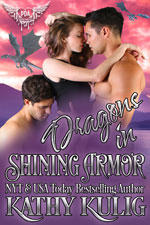
How to Kill a Vampire Hoax
By Kathy Kulig
The only casualties of vampire killing kits might be buyers’ bank accounts.
Collectors of antiques and curiosities are bound to get burned once in a while—especially if they neglect to do their homework before buying. But half the fun in collecting is discovering the origins of an object, even if it’s a fake. That seems to be at least partially the case in the rash of vampire killing kits that have been turning up at museums, auctions and even on eBay. Collectors are paying staggering prices for the kits and generating a furor among bloggers arguing about their authenticity. One kit was banned from eBay and is now up for sale for $35,000 by a private owner.
The controversy piqued my curiosity because I saw such a kit at the Mercer Museum in Doylestown, Pa.
The museum acknowledged that people in the past believed in vampires, so at first they thought the kit might be real.
In 2003, an anonymous bidder walked away with a vampire killing kit at Sotheby’s for $12,000. Sotheby’s maintained that some experts believe similar kits were carried by travelers in Eastern Europe in the 18th and 19th centuries, but the kit they were selling was thought to have been assembled as a souvenir rather than for actual protection. The walnut box contained a wooden stake, 10 silver bullets, crucifix, pistol, rosary and vessels for garlic powder and serums.
Contents found in other similar kits include: knife, wooden hammer, prayer book, pament (holy soil), holy water, mir (anointing oil), tamaie (holy incense), pliers to remove the vampire’s teeth, magnifier, and a syringe to inject liquid garlic or secret serum. There are even some 21st century kits for sale now, one of which allegedly includes poppy seeds to distract vampires obsessed with counting and a holy-water squirt gun.
Vampire lore has circulated throughout the world for thousands of years. However, tales of blood-sucking beasts were largely considered superstition among educated Europeans until the 1720s when two cases of alleged vampirism spread fear throughout Eastern Europe, where belief in vampirism was most prevalent. News spread across the continent, leading skeptics to rethink their position. It makes sense that people may have made and sold vampire killing kits to wary travelers as a result.
Several novels featuring vampires were published in the 1800s, romanticizing and popularizing vampires and rekindling interest in the folklore surrounding them. The most famous is Bram Stoker’s 1897 Dracula. Again it makes sense that some entrepreneur would seek to make a buck off the fascination with these dark creatures by making kits to sell as curios and souvenirs.
So are the kits turning up today vestiges of a 18th century paroxysm of fear or a 19th century fad? The objects in many of them do appear to be actual antiques dating back to the mid-1800s or early 1900s, when vampire mania was high. However, that doesn’t mean the kits themselves are authentic.
The Mercer Museum has now tested and determined its Vampire Killing Kit to be a hoax, even though many of the objects are indeed from the 1800s. The paper labels have been artificially “aged,” the silver bullets are pewter, and the paper used in the labels contain a fluorescent optical brightening agent introduced into paper manufacturing around 1945. The glass in the magnifier is modern, and the adhesive used in the crucifix is of recent origin.
The museum has put the whole issue in context nicely as this quote from the literature at the museum demonstrates: “The Kit remains a delightful tongue-in-cheek tribute to the popularity of vampire literature. That’s the final word, and we’ll stake our reputation on it.”
Kathy Kulig is the author of SEDUCING THE STONES from Ellora’s Cave and WILD JADE from Cerridwen Press. In addition to her writing career, she is a cytotechnologist and has worked as a research scientist, medical technologist, dive master and stringer for a newspaper. You can find out more about her and her books at kathykulig.com
|
|
  
Out Now

Out Now

Out Now

|



